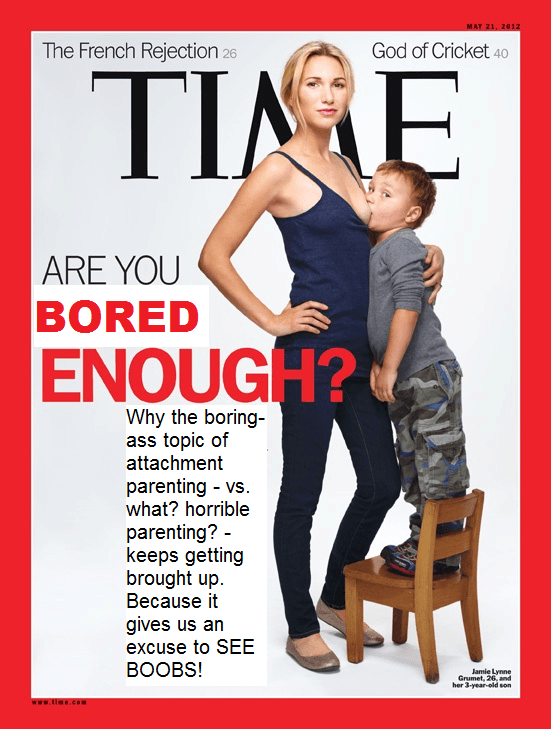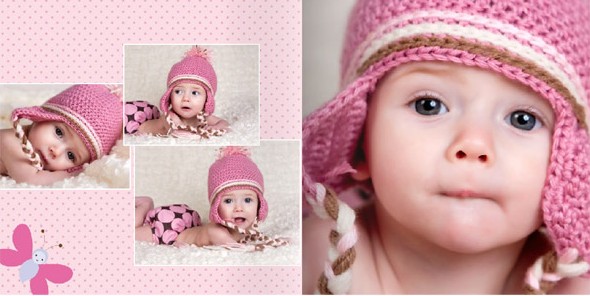 People will often point out things you should or should not be doing with your new baby… “You hold him too much, you’ll spoil him! You should give her solids, she’ll sleep better at night! You should dress him more warmly! You should take off those blankets! What, you let your baby sleep in bed with you? Don’t you know how dangerous that is?!”
People will often point out things you should or should not be doing with your new baby… “You hold him too much, you’ll spoil him! You should give her solids, she’ll sleep better at night! You should dress him more warmly! You should take off those blankets! What, you let your baby sleep in bed with you? Don’t you know how dangerous that is?!”
I slept with my daughter until she was two and expecting my second child. Now I sleep with my 5-month old son and have no plans yet to move him out of my bed. When people comment on it, I reply that I like having him close by. Yes, it’s slightly uncomfortable to sleep with him next to me (my arm gets numb and tingly if it’s wrapped around him too long, my back hurts when I’m curled around him in a funny position, or when I fall asleep feeding him…) but for me that’s better than having to get out of bed and go to his room a few times a night to feed him. I like that he’s so close by I can sense him wriggling around and can feed him before he wakes up completely. I like to know he’s right there next to me and that he’s OK.
For those who are unaware of the facts, sleeping with your baby in bed may indeed sound like a dangerous practice. What if she falls off or gets stuck between the mattress? What if one parent rolls onto the baby, or she gets smothered by a pillow or blanket? But when you examine the reality of the situation, it’s apparent that sleeping with your baby in a safe manner may actually be healthier for her than putting her to sleep alone in a crib.
Dr. Sears points out that the incidence of SIDS is dramatically higher in a crib versus a parent’s bed. Although there are cases of accidental smothering and entrapment, such situations are very rare. The September/October 2002 issue of Mothering Magazine presents research done throughout the whole world on the issue of safe sleep. They conclude that not only is sleeping with your baby safe, but it is actually much safer than having your baby sleep in a crib. Infants who sleep in a crib are twice as likely to suffer a sleep related fatality (including SIDS) than infants who sleep in bed with their parents.
Instead of warning parents not to sleep with their babies, Dr. Sears advocates teaching parents how to sleep safely in bed with their babies. Much of this is common sense, but here are the guidelines he suggests:
- It is unlikely for baby to fall out of bed while sleeping next to mother. Dr. Sears compares it to a heat-seeking missiles; babies automatically gravitate toward a warm body. But to be on the safe side, place baby between mother and a guardrail or push the mattress flush against the wall and position baby between mother and the wall. Be sure there are no crevices that baby could sink into.
- Place baby adjacent to mother, rather than between mother and father. Many mothers feel they are so physically and mentally aware of their baby’s presence even while sleeping, that it’s extremely unlikely they would roll over onto their baby. Some fathers, on the other hand, may not enjoy the same sensitivity of baby’s presence while asleep; so it is possible they might roll over on or throw out an arm onto baby. After a few months of sleep-sharing, most dads seem to develop a keen awareness of their baby’s presence.
- Place baby to sleep on his back.
- Use a large bed, preferably a queen-size or king-size. A king-size bed may wind up being your most useful piece of “baby furniture.” If you only have a cozy double bed, use the money that you would ordinarily spend on a fancy crib and other less necessary baby furniture and treat yourselves to a safe and comfortable king-size bed.
- Some parents and babies sleep better if baby is still in touching and hearing distance, but not in the same bed. For them a bedside bassinet or co-sleeper is a good option. This arrangement gives parents and baby their own separate sleeping spaces yet, keeps baby within arm’s reach for easy nighttime care. Dr. Sears suggests the Arm’s Reach® Co-Sleeper® Bassinet (www.armsreach.com).
- Do not sleep with your baby if:
- You are under the influence of any drug, alcohol, or tranquilizers. If you are drunk or drugged, these chemicals lessen your arousability from sleep.
- You are extremely obese. Obesity itself may cause sleep apnea in the mother, in addition to the smothering risk.
- You are exhausted from sleep deprivation. This lessens your awareness of your baby and your arousability from sleep.
- You are sleeping on a cushiony surface, such as a waterbed or couch.
- Don’t allow older siblings to sleep with a baby under nine months. Sleeping children do not have the same awareness of tiny babies as do parents, and too small or too crowded a bed space is an unsafe sleeping arrangement for a tiny baby.
- Don’t overheat or overbundle baby. Be particularly aware of overbundling if baby is sleeping with a parent. Other warm bodies are an added heat source.
- Don’t wear lingerie with string ties longer than eight inches. Ditto for dangling jewelry. Baby may get caught in these entrapments.
- Avoid pungent hair sprays, deodorants, and perfumes. Not only will these camouflage the natural maternal smells that baby is used to and attracted to, but foreign odors may irritate and clog baby’s tiny nasal passages.





Most of the times I also sleep with my baby.
I’m thrilled to see that you have read all of Dr. Sears information. So many parents stop before they get to the safety measures.
I do want to mention that when we are talking about infants that die in cribs, we are rarely talking about a safe crib. When doing the scene investigation, the crib typically has bumpers, quilts, stuffed animals, pillows and even laundry in it.
A Safe crib with nothing but a fitted sheet and a baby in it – in mom’s room is the safest way to go in the United States. Our mattresses are soft. We use pillows and blankets. Most countries in the world do not.
We are also concerned about the “over tired parent”. What parent of an infant is not over tired? The time that a parent is most likely to bring an infant into bed is when Mom just can’t survive one more minute without some sleep.
It’s only for a few months. Why risk it? Sleep baby in a safe crib in Mom’s room. Bring baby into your bed to breastfeed, play, snuggle and cuddle but when it’s time to sleep, put baby in their own safe space.
I’d put my baby in a crib next to me, but there’s just no extra room! I want to find a bassinet that I can put beside me so he’s not in my bed all the time. I like room to spread out sometimes 🙂
I concur with Pam about her safe sleep recommendations. I work for an agency that does bereavement for families who have lost babies to SIDS and other sleep-related deaths. We have actually seen an increase in infant deaths in parent beds over the past couple of years as bedsharing increases in popularity.
As for the statistic that SIDS occurs more frequently in cribs than in adult beds, this is very misleading. This argument refers to the shift in Medical Examiners’ practice to classify deaths in adult beds as Accidental Suffocation rather than SIDS. This shift is actually due to the increased understanding among medical professionals that babies are less likely to succumb to either SIDS or accidental suffocation when they are placed on their backs, in a crib, with nothing else in the crib to pose a barrier to their breathing.
Accidental suffocation in this case refers to the process of re-breathing exhaled carbon dioxide. Scientists who study SIDS believe that a baby can actually suffocate when an object (such as a blanket, pillow, bumper pad, sleep positioner, or even the baby’s mattress if he is on his tummy) blocks adequate oxygen from entering the baby’s breathing space. This type of suffocation occurs silently and rapidly, usually while the baby is sleeping. The trend for MEs is to use SIDS only as a diagnosis of exclusion, when there are no possible barriers to the baby’s breathing (i.e., when the baby is found alone, on its back, in a crib with no soft bedding, etc.)
Logically, if MEs are not classifying deaths as SIDS when the baby is found in an unsafe sleeping environment, they are not classifying deaths in adult beds as SIDS. The deaths are still occurring; they are just being classified as accidental suffocation rather than SIDS.
Just don’t sleep with your kid if you have a waterbed, I think that speaks for itself.